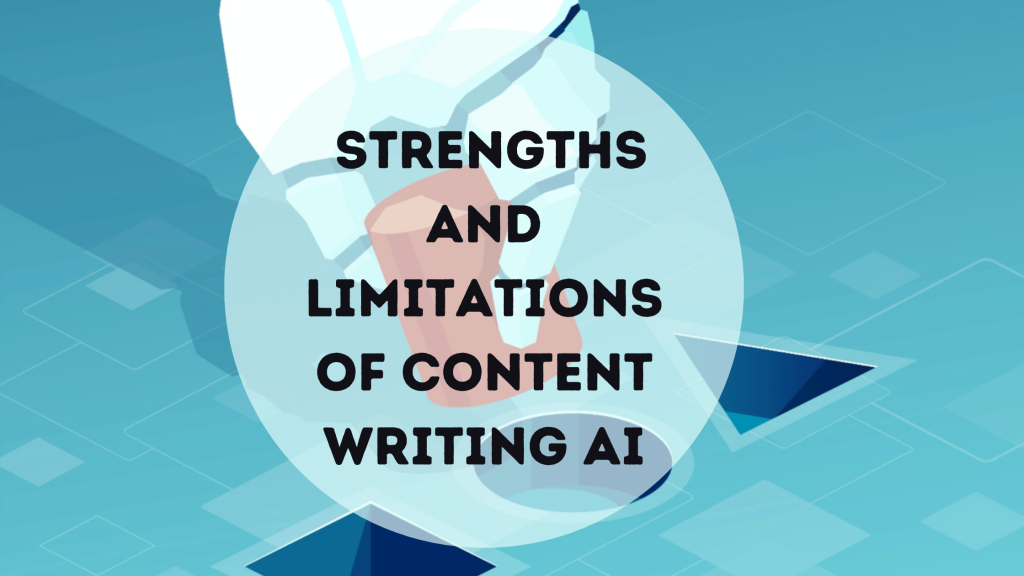
In an era characterized by rapid technological advancement, artificial intelligence (AI) has discreetly infiltrated nearly every facet of our daily lives. Whether it’s voice-activated virtual assistants or autonomous vehicles, the pervasive influence of AI is undeniable. Even the realm of writing has not remained untouched by this wave of innovation, as AI-powered tools are progressively demonstrating their ability to produce literary works that can stand shoulder to shoulder with those crafted by human authors.
The rise of artificial intelligence (AI) has sparked a lively debate within the writing community and beyond: Will AI writers replace human writers? As AI technology advances by leaps and bounds, it’s natural to wonder about the future of creative expression, journalism, content marketing, and beyond. In this blog, we’ll delve into the topic, exploring the current landscape, the strengths and limitations of AI writers, and what the future may hold for the world of writing.
The Current State of AI Writers:
AI writers are already a reality, with various tools and platforms capable of generating written content. These AI systems use machine learning algorithms to analyze vast amounts of text data, learning grammar, sentence structure, and even tone. They can produce news articles, blog posts, product descriptions, and more, often with impressive speed and accuracy.
Understanding AI in the Writing Industry: Transforming the Landscape
AI has brought about a revolution in the writing industry by automating various tasks, elevating content quality, and facilitating broader audience reach for writers and publishers. However, maintaining the integrity of the written word in the digital era necessitates a balanced approach that combines AI assistance with human creativity and ethical considerations.
Artificial Intelligence (AI) has had a profound impact on the writing industry, reshaping the processes of content creation, editing, distribution, and consumption.
Advantages of AI Writing Tools

AI-driven writing tools have had a profound impact on the writing industry, revolutionizing how we create, edit, distribute, and consume written content. Below, we present a comprehensive overview of the various ways AI is being applied in the field:
Content Creation:
- Automated Writing: AI-powered tools are capable of producing a wide range of content, including text, articles, reports, and even creative pieces like poetry and fiction. These tools utilize natural language generation (NLG) algorithms to generate text that closely resembles human writing, using input data and prompts.
- Content Summarization: AI can condense lengthy articles or documents into concise summaries, making it easier for readers to grasp key points quickly.
- Language Translation: AI-driven translation tools can accurately translate content from one language to another, enabling writers to reach a global audience with precision.
- Reduced costs: AI writing tools can help you reduce the costs associated with writing, such as the cost of hiring writers, editing, and proofreading. This can be a major benefit for businesses and organizations that need to produce a lot of content on a budget.
- Access to a wider range of knowledge: AI writing tools have access to a vast amount of information, which can help you write more informed and comprehensive content. This is especially useful for topics that require specialized knowledge or expertise.
Editing and Proofreading:
- Grammar and Spell Checking: AI-driven grammar and spell checkers swiftly identify and correct errors in written material, thereby improving overall writing quality.
- Plagiarism Detection: AI tools excel at scanning and detecting instances of plagiarism in written works, preserving originality and ethical standards.
Content Optimization:
- SEO-Enhanced Writing: AI assists writers in optimizing content for search engines by proposing relevant keywords and assessing the readability and structure of the material.
- A/B Testing: AI aids writers in conducting A/B tests to evaluate different headlines, titles, or content variations to determine what resonates best with their audience.
Personalization and User Engagement:
- Chatbots and Virtual Assistants: AI-powered chatbots engage with website users, offering information, responding to queries, and guiding them through content.
- Email Marketing Personalization: AI leverages user data and behavior analysis to customize email marketing campaigns, delivering relevant content to recipients.
Data Analysis and Insights:
- Analytics: AI tools analyze extensive datasets to provide insights into content performance, audience engagement, and emerging trends, empowering writers to refine their strategies.
Language Translation and Localization:
AI-driven language translation tools assist writers in expanding their reach by translating content into multiple languages, making it accessible to a global audience.
Limitations of AI in Writing

While artificial intelligence (AI) has indeed ushered in significant progress within the writing industry, it also grapples with limitations and hurdles. Below, we outline some of the key constraints that AI faces in the realm of writing:
- Creativity and Originality Deficit: AI-generated content frequently lacks authentic creativity and originality. While it can mimic patterns and generate text based on existing data, it lacks the inherent capacity for genuine creative insight or the ability to innovate.
- Contextual Comprehension Challenges: AI encounters difficulties in grasping context, nuances, and cultural references. This often results in inaccuracies or awkward phrasing in content, especially when addressing elements like humor, satire, or culturally specific subjects.
- Complex and Specialized Subjects: AI may not possess the requisite depth of knowledge needed to produce high-quality content in intricate or highly specialized domains. Writing on subjects such as advanced science, medicine, or law often necessitates human expertise.
- Ethical Dilemmas: AI can be employed to generate counterfeit news, misinformation, or deepfakes, posing ethical quandaries and sowing concerns about the proliferation of false information, which erodes trust in written content.
- Deficiency in Emotional Intelligence: AI lacks emotional intelligence and empathy. It is incapable of comprehending or adequately addressing the emotional needs of readers, rendering the creation of emotionally resonant content a formidable challenge.
- Template Dependency: Certain AI writing tools heavily rely on templates, leading to the production of formulaic and repetitive content. This can dilute the engagement factor and fail to capture the distinct voice of the author or brand.
- Complex Syntax Errors: Although AI excels in grammar and spell checking, it often grapples with intricate sentence structures, resulting in awkward phrasing or errors in more sophisticated writing styles.
- Inability to Tackle Unpredictable Scenarios: AI operates within the confines of its training data and may encounter difficulty adapting to unforeseen situations or effectively responding to entirely novel topics or trends.
- Language and Cultural Biases: AI models are trained on extensive datasets, which might harbor biases inherent in the data. Consequently, this can culminate in the generation of biased or discriminatory content, inadvertently perpetuating stereotypes.
- Limited Grasp of Humor and Sarcasm: AI frequently encounters challenges in comprehending humor, sarcasm, and irony—crucial elements of various types of content.
- Data Quality Dependency: The caliber of AI-generated content hinges on the quality of the training data. Should the data be tainted with bias, inaccuracies, or incompleteness, the AI’s output is susceptible to these limitations.
- Mandatory Human Oversight: AI writing tools typically necessitate human oversight to guarantee content precision, relevance, and adherence to brand guidelines. This, at times, offsets the time-saving advantages.
- Complex Proofreading: While AI adeptly identifies common grammatical and spelling errors, it may falter in spotting more intricate language issues such as inappropriate word usage or awkward phrasing.
- Constraints in Handling Lengthy Content: AI generally excels in crafting shorter content pieces. Producing extensive, comprehensive reports or coherent books with a consistent flow can pose challenges to AI.
- User Engagement and Creativity: AI may encounter difficulties in engendering content that genuinely captivates readers or evokes emotional responses. Content that hinges on human creativity and storytelling often outperforms AI-generated
- Decreased demand for human creativity: AI writing tools could potentially decrease the demand for human creativity in the writing profession. This is because AI writing tools are becoming increasingly capable of generating text that is indistinguishable from human-written text.counterparts in these aspects.”
Ethical Concerns and Implications
The integration of artificial intelligence (AI) into the writing industry gives rise to several ethical concerns and considerations that warrant careful attention. Here are some of the primary ethical concerns and their associated implications:
- Plagiarism and Copyright: AI tools possess the capability to produce content that closely resembles existing works, potentially leading to inadvertent instances of plagiarism. It is of paramount importance for writers and content creators to ensure that AI-generated content does not run afoul of copyright laws or ethical norms.Implication: Writers and content creators bear the responsibility of exercising prudence and verifying the originality of AI-generated content to forestall legal and ethical predicaments.
- Misinformation and Fake News: AI can be harnessed to fabricate counterfeit news articles, misleading content, or deepfakes. This engenders a significant ethical quandary, as it can contribute to the proliferation of false information and undermine the credibility of written content.Implication: Content creators must employ AI judiciously and diligently cross-verify the accuracy of information to forestall the dissemination of disinformation.
- Bias and Equity: AI models undergo training on extensive datasets that may contain embedded biases. This can culminate in the generation of biased content, inadvertently reinforcing stereotypes or perpetuating discrimination.Implication: Content creators and AI developers shoulder the responsibility of proactively addressing biases within AI models to uphold fairness and inclusivity in content.
- Privacy: AI tools partake in the collection and analysis of user data for the purpose of personalizing content. This raises concerns about privacy, with users expressing unease regarding the extent to which their data is employed in shaping content recommendations.Implication: Transparency in data collection practices and obtaining user consent emerge as indispensable measures to assuage privacy apprehensions and sustain trust.
- Technology Reliance: An excessive reliance on AI writing tools could precipitate a decline in conventional writing skills, conceivably impinging on the employability of human writers.Implication: Writers should strive to strike a harmonious equilibrium between the utilization of AI tools and the cultivation of their own writing proficiencies to remain competitive in the industry.
- Human Touch Erosion: AI-generated content may want for the emotional depth, empathy, and creativity that human writers infuse into their work. This can culminate in content that comes across as mechanical or devoid of human sensibility.Implication: Content creators should harness AI to complement their endeavors rather than supplant them, ensuring that the human touch persists in writing.
- Content Ownership: The determination of ownership pertaining to AI-generated content can pose intricate challenges. Writers may necessitate the elucidation of their rights and responsibilities when AI tools are involved in content generation.Implication: The establishment of unambiguous contracts and agreements is imperative to address matters of content ownership and utilization rights.
- Occupational Displacement: The automation of specific writing tasks through AI has engendered concerns regarding potential occupational displacement among human writers.Implication: The industry may necessitate adaptation to novel roles and duties for writers, concurrently affording opportunities for skill enhancement.
- Ethical Protocols: The writing domain may find it imperative to institute lucid ethical protocols and benchmarks governing the use of AI in content creation and dissemination.Implication: Writers, content creators, and AI developers ought to adhere assiduously to ethical protocols to ensure the conscientious and ethical deployment of AI in writing.
- Data Security: AI tools requisition access to data, which stands susceptible to breaches or misappropriation in the absence of adequate safeguards.Implication: The implementation of robust data security mechanisms is indispensable to safeguard sensitive information employed by AI tools.
- Bias: AI writing tools draw from extensive datasets of text, which implies that they may inherit biases or inaccuracies present in the data they are trained on. Consequently, there is the potential for issues like AI-generated text that could be construed as offensive or discriminatory.
- Privacy: AI writing tools harbor the capacity to amass and analyze personal data, a facet that raises legitimate concerns regarding privacy. For instance, an AI writing tool could be employed to track an individual’s online behavior or generate content personalized to their preferences.
- Security: AI writing tools hold the capacity to generate disinformation, including fake news, which could have adverse repercussions on society by leading individuals to make decisions predicated on erroneous information.
Striking a Harmonious Balance: Collaborative Synergy Between Humans and AI in Writing

Achieving a harmonious equilibrium between human creativity and the capabilities of artificial intelligence (AI) is pivotal in the writing industry. This balance optimizes the strengths of both entities while mitigating their respective limitations. Here, we delve into the ways in which this equilibrium can be established through collaboration:
1. Ideation and Strategy Development:
- Human Role: Human writers excel in ideation, harnessing their creativity to outline content strategies and brainstorm innovative topics that resonate with their audience.
- AI Contribution: AI lends its assistance by analyzing data to pinpoint trending subjects, propose relevant keywords, and offer insights into audience preferences.
2. Content Generation:
- Human Role: Human writers bring their unique creativity, contextual understanding, and emotional depth to the content. They craft narratives, imbue content with a distinct voice, and ensure it engages readers.
- AI Contribution: AI assumes responsibility for automating routine content generation, producing data-driven reports, and aiding in the creation of structured, factual information.
3. Content Enhancement and Refinement:
- Human Role: Human editors play a pivotal part in refining content, ensuring it aligns with the desired style, tone, and clarity. Their touch infuses the content with repeatability to the target audience.
- AI Contribution: AI-driven editing and proofreading tools step in to detect grammatical inaccuracies, suggest enhancements in readability, and ensure adherence to predefined style guidelines.
4. Identifying AI’s Suitable Tasks: AI excels in tasks characterized by repetition, predictability, and extensive data processing. For instance, AI can be effectively deployed to automate tasks such as data entry, customer service interactions, and the detection of fraudulent activities.
5. Defining Human and AI Roles and Responsibilities: Humans are adept at tasks that demand creativity, judgment, and social intelligence. For instance, humans can take on responsibilities such as goal-setting, decision-making, and engaging with customers.
6. Establishing Effective Communication and Collaboration Channels: For successful collaboration between humans and AI, it is imperative to establish transparent and efficient communication channels. This includes clearly defining the roles and responsibilities of both parties and ensuring mutual awareness of these roles.
7. Monitoring and Assessing AI Performance: Regular monitoring and evaluation of AI performance are essential to ensure its effective and ethical utilization. This entails establishing precise performance metrics and conducting periodic reviews of outcomes.
8. Ensuring Transparency in AI Utilization: Transparency is key in disclosing the use of AI, not only to users but also to the public at large. This fosters trust and mitigates potential misunderstandings regarding the role and impact of AI.
“As technology advances, there is a growing interest in the potential of AI tools to assume various writing tasks. While some argue that AI can efficiently produce high-quality content, there is a contrasting viewpoint that it is far from being a replacement for human writers. AI tools excel at tasks such as editing, grammar checking, and generating ideas. However, they are inherently limited in terms of creativity and their capacity to comprehend complex emotions.
Human writers bring to the table a distinct perspective, storytelling prowess, and the ability to establish profound connections with readers. Furthermore, AI-generated content often lacks the personal touch and authenticity that is a hallmark of human writing. While AI tools are undeniably valuable as assistants, the future of writing remains heavily reliant on the irreplaceable human touch.”
Thanks,






Leave a Reply
You must be logged in to post a comment.